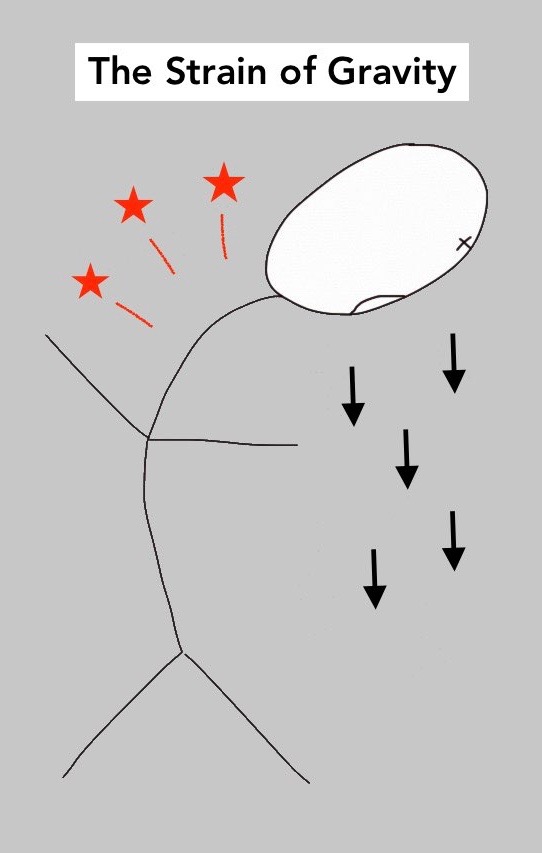Postural Distortion: A Primary Root Cause of Unexplained Pain

Understanding postural distortion and it’s capacity to cause not only lower back pain but pain throughout the entire body, begins with understanding the body in gravity.
The impact of gravity on our bodies cannot be stated too strongly. Nothing on earth escapes gravity’s ubiquitous and constant force.
When the body is in balance, when the head is aligned over the spine and the spine is aligned over the pelvis, legs, and feet, the gravitational field is synergistic with the human structure.
In other words, the force of gravity is benign because the body is able to relax in a state of equipoise, a state of balance.
postural distortion and The Loss of Verticality
When the body loses its verticality, however, as happens due to pelvic torsion, injury, trauma, shallow breathing, muscular compensation, or a variety of other factors, this state of equipoise is disrupted.
This is what we mean when we say, postural distortion.
There are two primary types of postural distortion:
- Hyperflexion
- Pelvic Torsion
When the head, for example, chronically moves forward off the center line (the coronal plane) as a consequence of the muscles in the front of the body becoming too tight, the neck and back muscles are forced to contract to counteract the pull of gravity on the head.
The head becomes a 10-11 pound weight that your back muscles have to hold up all day long.
This is hyperflexion, so named because of the tightness in the front of the body. The muscles in the front of the body have become too tight or hyperflexed.
On the other hand, when the head is balanced over the shoulders, it is protected from the downward pull of gravity. Gravity is a neutral force and passes through the head, neck and body without triggering a muscular compensatory response.
Pelvic Torsion
Another example of postural distortion occurs when there’s a torsion in the pelvis. A torsion in the pelvis can lead to what’s called a functional leg-length difference which compels the body to lean to one side, off the mid-sagittal center line.
This elicits a powerful compensatory contraction of muscles in the waist and lower back in order to bring the body upright. As long as a pelvic torsion is left uncorrected, this compensatory contraction will persist, eventually fatiguing the muscles, causing ischemia (low blood flow), and producing lower back pain.
Learn More about Pelvic Torsion
Unraveling the Mystery of Lower Back Pain
The conventional medical model still views the body as an assembly of individual parts to be scrutinized individually, rather than as an integrated whole.
Once the overall structure of the body is taken into account, and forces such as gravity and postural distortion are seen in their proper light, the mystery of lower back pain (and much other chronic pain) will no longer be so baffling.
Realizing that the majority of lower back pain is the result of muscular spasm and strain opens up the possibility of real and lasting relief.
Return to Top | Causes Index | Home Page
Anatomy Images Courtesy of BIODIGITAL

|
CURRENT COURSES POSTURAL BLUEPRINT FOR CORRECTING PELVIC TORSION: The Complete Guide To Restoring Pelvic Balance (2022) STRETCHING BLUEPRINT FOR PAIN RELIEF & BETTER FLEXIBILITY: The Complete Guide to Pain-Free Muscles Using Active Isolated Stretching (2020) HEALING THE HIDDEN ROOT OF PAIN: Self-Treatment for Iliopsoas Syndrome (2013) FREE MINI COURSE: Introduction to Active Isolated Stretching |

